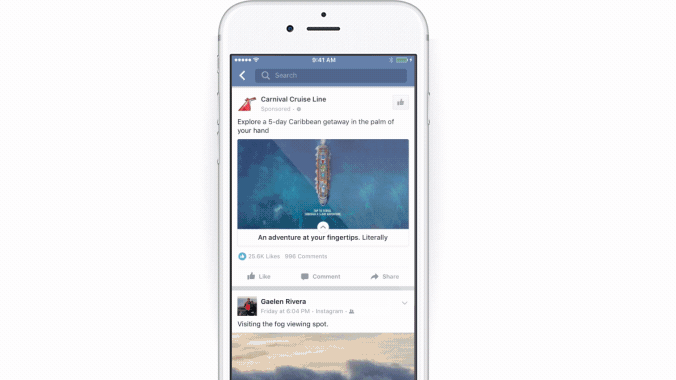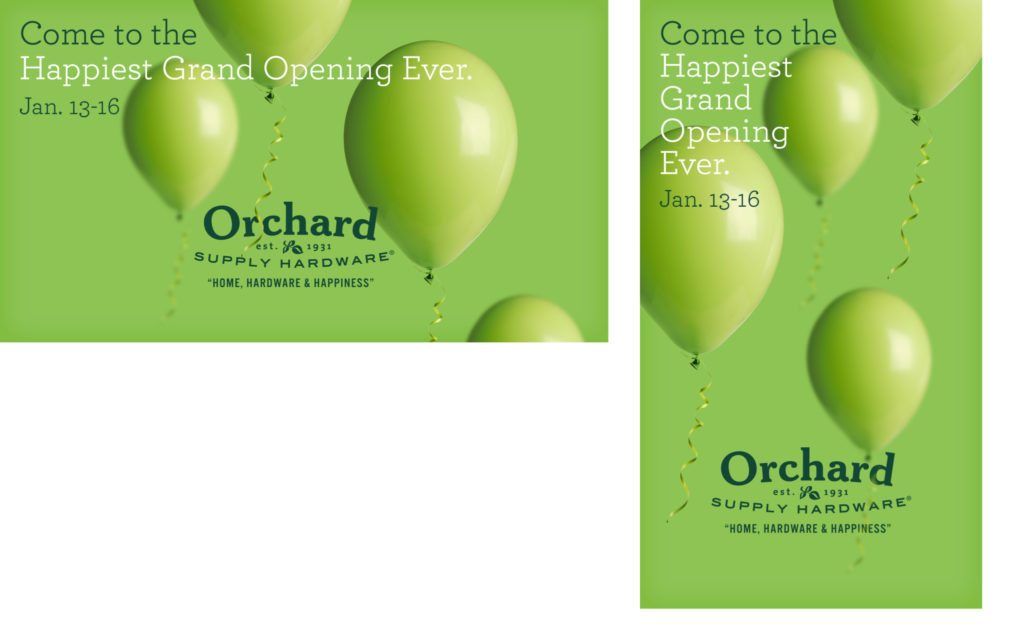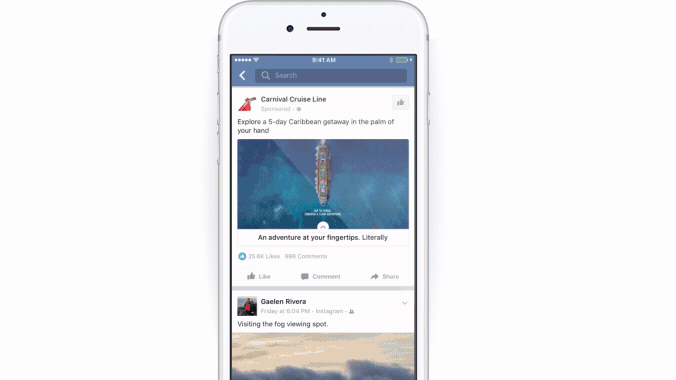
31 Jan 5 Things To Keep In Mind When Creating A Facebook Canvas Ad
So, you’ve been hearing the hype and you’re finally ready to embark on creating your own Facebook canvas ad. Congratulations! However, before you begin, take just a moment to read through these five things to keep in mind when creating your newest, shiniest piece of social content. The canvas ad format can allow for both an incredible captivating and compelling result or a totally disastrous flop, and the direction that yours takes is entirely in your own hands. These easy-to-follow action items will help you achieve the former (and avoid falling victim to the latter), so you get a nice, big pat on the back from your manager!
Start with an Outline
Before you put pen to paper (or fingertip to mouse button), it’s of vital importance to have a clear idea of what your canvas ad is meant to achieve (i.e., website visits, event page R.S.V.P., etc.) and what it’s going to look like. The optimal canvas ad should have a cohesive message throughout, as well as a cohesive visual style. In order to accomplish both of these things, it’s best to begin your process with a carefully considered outline. You can employ several different types of elements in your canvas ad, including full-screen images, text blocks, buttons for offsite links, image carousels, auto-play videos, full-screen tilt-to-pan images, and more. Because of the plethora of options at your disposal, it’s all the more important to think your ad through, from beginning to end, before slapping pieces together haphazardly. Facebook allows you to range from a fairly simple (3-5 elements) to a fairly involved (10+ elements) structure, but whether you’re looking to create a 5 panel canvas ad or a 15 panel one, we’d strongly advise you to draft a wireframe of how you envision your final product.
Consider Sizing

Facebook canvas ads are viewable only on mobile. If you didn’t know, now you know. This means that, rather than employing any of the various horizontal dimensions utilized across Facebook and other social media platforms, you’ve got to think, and work, in vertical rectangles. The standard resolution of most contemporary smartphones happens to be 1080 x 1920, so this is a safe size for your canvas ad components. While it’s not strictly essential (i.e., you can make a canvas ad with component images of any size), your ad will look cleaner, more professional, and generally better if, at the very least, your first frame occupies the full dimensions of a mobile screen. From there, the ad is your oyster, but sticking with this sizing certainly will not hurt.
*There are some exceptions to this general sizing rule. Buttons will only take up a small sliver of the total vertical height of the frame, and text blocks only a little more than that. Furthermore, you will need to create a page post, from which users will be delivered to your canvas ad. This post will have both copy and headline, as well as an image optimally sized at 1200 x 628.
Branded Font?
When it comes to including buttons or text blocks in your Facebook canvas ad, there’s another important thing to keep in mind. In both cases, your options for fonts are quite limited. If you want to, or need to, use a specific, branded typeface, then you are almost certainly going to need to create an image with the text, in whatever color on whatever color, outside of the canvas ad platform. You would then simply drop this in as you would any other image. Also, as you can make nearly all of the available component types link off to a desired destination, you could, conceivably, create an image to look like a button, in your branded font, and simply insert it as a still image pushing to whichever link you would have otherwise had your button directing. Possessing this little pearl of wisdom in advance will likely save you quite a bit of time, work, and headache when creating your own Facebook canvas ad.
Allocate Time

These Facebook canvas ads will take you a little longer to create than your average Instagram post or tweet. You do not want to procrastinate when creating a canvas ad. Let us repeat, you do not want to procrastinate when creating a canvas ad. A simpler ~5 component ad might take you an entire workday to complete, while a more complex ~15 component ad might take you nearly an entire week. If there’s one thing you really don’t want to do, when creating a canvas ad or doing literally anything else, it’s leave yourself a day to do a week’s worth of work.
Preview, Test & Repeat
Finally, be prepared to post check this thing like you’ve never post checked anything in your life. It may even be worth recruiting a small team to tackle, as it’s much harder for a small mistake to slip past several keen sets of eyes. Preview your canvas ad before publishing to ensure every detail is precisely what you’ve intended it to be. Test every component to ensure seamless functionality and correct link delivery. Only after you’ve exhausted yourself and your team with safeguarding against any possible error, feel free to hit that button and let all of your pent up canvas ad stresses simply evaporate away.

Now that you’ve made it through this holy grail of things to keep in mind when creating your own Facebook canvas ad, you should be ready to go out and do it! We can’t wait to see all of the shiny, new canvas ads that are sure to be populating Facebook in the coming months. Good luck!






